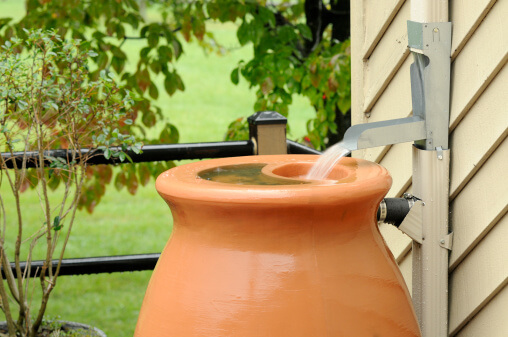
Buyers Guide to Rainwater Collection Tanks
Since early humans first realized they could dig a ditch, hollow a log or carve a depression in stone to capture and retain water for later use, mankind has been harvesting rainwater. Luckily, technologies and methods have advanced, and today there are many different rain harvesting materials and configurations. Let’s look at the most popular options.
Plastic or Polyethylene
Plastic and polyethylene rain barrels are most common. They’re affordable, readily available, lightweight and easy to install. They feature a variety of shapes from traditional round barrels to slim, rectangular versions that resemble wall-hugging planters and include space for flowers or plants. Since these materials deteriorate in bright sunlight, look for units with UV protection. They may also contain BPA, so if this is a concern, opt for a different material.
Clay or Stone
Ceramic clay or stone barrels are attractive and classic. They often resemble tall urns, jars or planters with a built in planting area, so they’re decorative, functional and a great option for homeowners seeking something that serves multiple purposes. Clay or stone units tend to be more costly, heavy and somewhat difficult to handle.
Collapsible
Smaller knock-down or collapsible barrels are affordable, made from lightweight materials like polyester or nylon, supported by a lightweight frame and ideal when space is at a premium. They’re designed to be collapsed and stored over winter. Larger capacity versions are more expensive, but they feature industrial, weather-resistant materials, and because they’re long and low, they can be tucked out of sight inside crawl spaces and under decks.
Metal
Large metal rainwater tanks are common in rural settings, but smaller, sleeker versions are also available. Fabricated in slim, rectangular shapes from galvanized metal or stainless steel, they’re designed for residential use, and some are lined with PVC or polyethylene for added durability. Utilitarian tanks are comparatively affordable, while high-end versions are more expensive.
Wood
Wood is a traditional material, and over time, it often weathers to a subtle gray that blends into the surroundings. Like plastic, wood versions come in streamlined square and rectangular configurations as well as the familiar barrel profile. Wood is heavier, so it’s more challenging to handle and typically more expensive than plastic. For durability, look for units made with hardwoods or rot-resistant cedar.
The average home-based rainwater harvesting unit holds about 50 to 55 gallons of water, but containers range in size from 15 to more than 1000 gallons. If this is the year you invest in rainwater harvesting tanks, you’ll be able to find sizes, shapes and materials that suit your budget, needs and preferences.